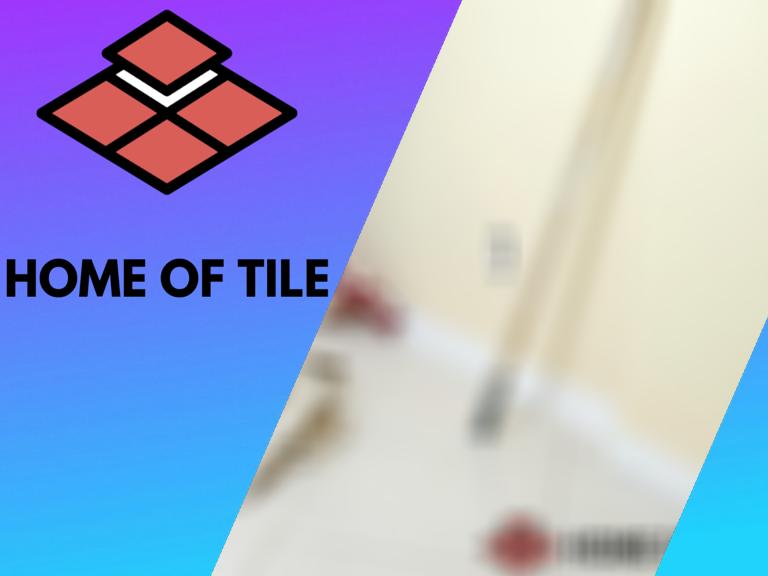How To Repair Shower Grout. What professionals say
If you’ve noticed the grout in your shower or around the washroom fading or decolorating, it might be time to replace the old grout with a new and fresh filling. Doing this requires only minimal skill and some time.
To repair shower grout, remove the existing grout with a grout saw and make sure the spaces between the titles are clear of any grout. Next, use a grout float to evenly distribute grout in all the areas and wait for it to dry.

There are some technical aspects to the project and some techniques that can help you complete the project successfully. I will detail each step to help you understand what we’re talking about. Keep reading and get ready to fix your shower grout!
Contents
- 1 1. Determine Whether You Need to Repair or Replace Your Grout
- 2 2. Clean the Grout Before Removing It
- 3 3. Remove the Existing Grout With a Grout Saw and Vacuum
- 4 4. Clean the Tiles and Prepare Grout Mixture
- 5 5. Grab the Grout Float and Start Applying
- 6 6. Remove Extra Grout From the Surrounding Tiles
- 7 7. Wait for the Grout To Dry and Clean It With a Sponge
- 8 Final Thoughts
1. Determine Whether You Need to Repair or Replace Your Grout
The first thing you need to figure out is whether you can get away with repairing the existing grout or if it requires replacement.
You will often notice that the grout in your shower or washroom has tiny holes. If this is the problem you’re trying to fix, you can simply put a new layer of grout on top of the existing one. You can read this article for more information on that.
Doing this will fill in the tiny holes and avoid any build-up of bacteria or mold. Make sure to clean the existing grout before covering it up with a new layer.
If you’re uncertain about the extent of the damage, you can always hire a professional to inspect the grout. Water and moisture may have penetrated behind the tiles, which could lead to structural damage.
If the grout has extensive damage, you must remove it entirely and replace it. That’s what the rest of this article will be focused on.
2. Clean the Grout Before Removing It
When you have inspected the grout’s overall condition and concluded that it requires replacement, the first step would be to clean the grout with water and white vinegar.
Cleaning helps eliminate mold or bacteria build-ups and reflects the grout’s actual color. This will help match the color of the existing grout in your washroom.
You will need the following tools:
- Toothbrush
- White vinegar
- Water
- Bucket
- Gloves
- Protective eyewear
- Mask
Mix water and white vinegar in equal parts in a bucket and use the toothbrush to scrub the grout between the tiles.
3. Remove the Existing Grout With a Grout Saw and Vacuum
Make sure you are wearing your gloves and protective eyewear for this step, as chips from the grout can fly in random directions and cause eye injury. Also wear a mask to keep the grout dust out of your lungs.
Next, you will need a grout saw—a small metal tool designed explicitly for removing grout. Simply drive the saw within the spaces between the tiles to remove the existing grout.
Be careful while doing this, as you can damage the title if the direction of your grout saw isn’t straight.
Make sure to drive the tool in one direction instead of going back and forth. This video will give you a good idea of how to get this done:
Once you have removed the old grout, it’s time to grab a vacuum to suck any debris that might still be stuck in the cracks. Grab a few big chips of the grout you have removed to match the color of the grout you need to buy.
4. Clean the Tiles and Prepare Grout Mixture
Before you apply a new layer of grout to your tiles, it’s essential to clean the surface thoroughly with a damp cloth. Doing this removes any dirt that might compromise the quality of the finish.
Next, you will need to mix the grout with water to create the mixture that fills the spaces within the tiles. When you add water to the grout, mix it well with any handy tool and make sure that the consistency of the mixture is similar to creamy peanut butter.
5. Grab the Grout Float and Start Applying
Now that we have a clean canvas—that is, which is your wall with clean tiles—and have prepared the mixture, it’s time to grab the grout float and start applying. Use your grout float to take some grout from the bucket and slide the grout float diagonally at an angle.
Exert a bit of extra pressure to get the grout deep into the cracks. You shouldn’t worry about the grout spreading on the tiles—we’ll remove any excess mixture later. Once you are satisfied with your work and can see there are no more cracks to fill, move to the next step.
6. Remove Extra Grout From the Surrounding Tiles
You will use the same tool to perform this task as well. Simply take the grout float and hold it at a 45-degree angle, swiping across the area and removing any extra grout from the surface.
Make sure that all the gaps are completely filled and that you haven’t missed a crack.
7. Wait for the Grout To Dry and Clean It With a Sponge
You should wait around 30 minutes for the grout to dry up before you start cleaning it. Use a damp sponge or a cloth to even out any irregularities. It might require multiple repetitions to get the job done.
Make sure you don’t use too much water to clean the haze. This can damage the grout, which is not completely dry. Don’t use too much pressure either. The objective here is to evenly distribute the grout across all the cracks.
Once you’re done with this step, you’ll have to wait a while before wiping off the haze from the tiles. You can consult the manufacturer’s instructions, but it’s usually 24-48 hours. Use a microfiber cloth or a towel to do this.
Final Thoughts
It’s never a pretty sight when grout gets old and looks dirty. It risks your family’s hygiene and simply looks ugly. Fixing a shower grout is quite simple if you follow the steps above and remain open to getting a professional’s opinion.








